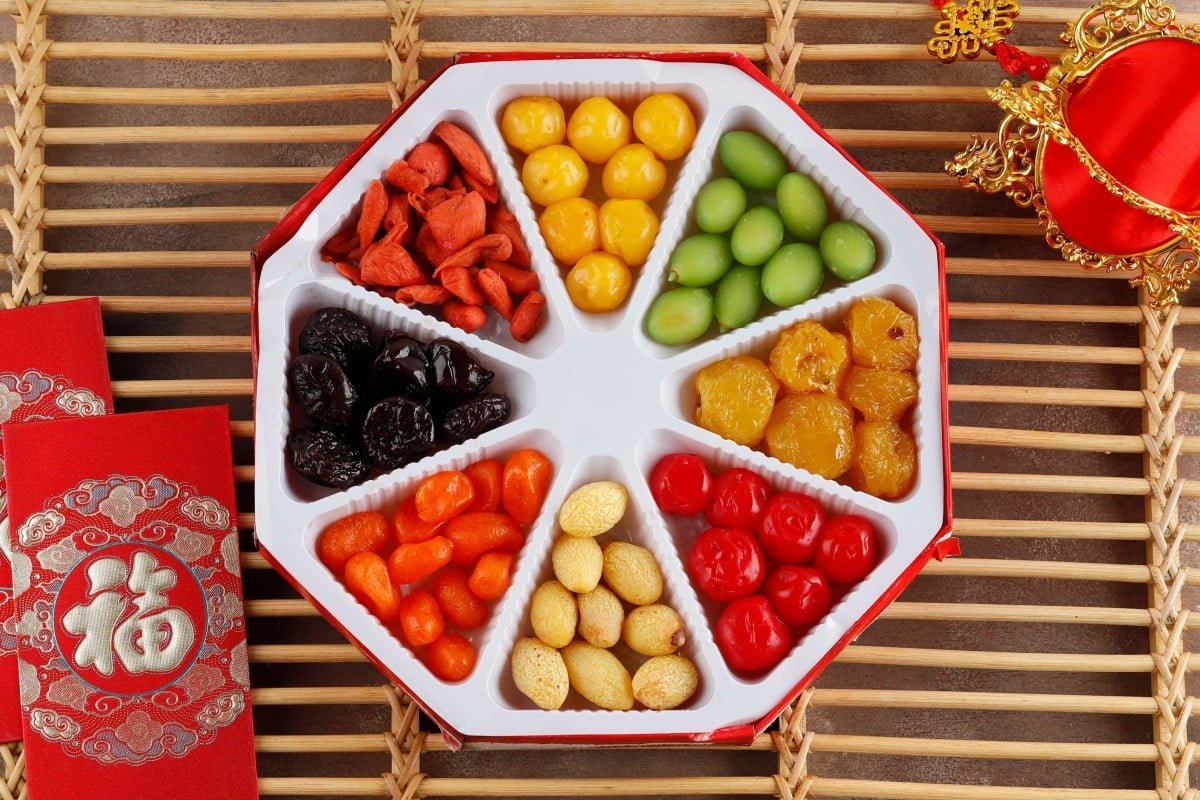Chinese New Year, also called the Spring Festival, is celebrated with traditions that symbolize renewal, luck, and prosperity. Among these traditions, the chuen hup, or “togetherness box,” stands out as a delightful feast of sweet treats and a vessel of cultural significance dating back to the Ming dynasty (1368-1644).
Typically round and divided into compartments, the chuen hup contains snacks that symbolize blessings for the year ahead. Traditionally, these boxes feature eight sections, referred to as the “Eight Sweets,” each with candied delights such as lotus root, lotus seeds, water chestnuts, winter melon, carrot slices, kumquat, coconut shreds, and wedges.
Each treat holds a special meaning tied to its pronunciation or symbolism in Chinese culture. For instance, the pronunciation of lotus root (lin ngau or lian ou) resembles the words for “year” and “have,” symbolizing continuous good fortune. Lotus seeds represent fertility and prosperity, while water chestnuts, written like a horse’s hoof in Chinese, evoke the saying “horses bring success.”
Winter melon, broad at both ends, signifies a strong start and finish to the year. The bright orange of carrot slices and kumquat, paired with their resemblance to gold, represent wealth and abundance. Meanwhile, coconut treats symbolize family harmony, with a nod to the wish for sons, as the word for coconut (yeh ji or ye zi) sounds like “father and son.”
Modern chuen hup often feature contemporary additions to suit evolving tastes, especially for children. Colorful candies, chocolate coins, and even macarons or Japanese sweets have joined the lineup. White Rabbit candies remain a nostalgic staple, bridging the gap between old and new traditions.
Fried snacks, golden and crisp, sometimes accompany the sweets, symbolizing fortune, while melon seeds are included for their association with wealth—their act of picking mirrors plucking riches.
While the chuen hup has adapted to modern preferences, its essence remains unchanged: a symbol of togetherness, sweetness, and joy. It not only represents blessings for the New Year but also embodies the happiness shared with family and friends.
READ MORE:
